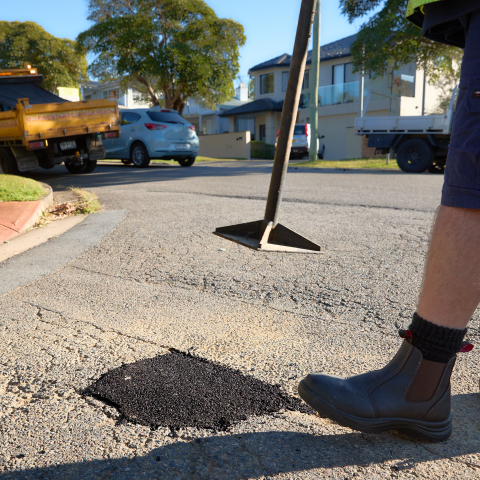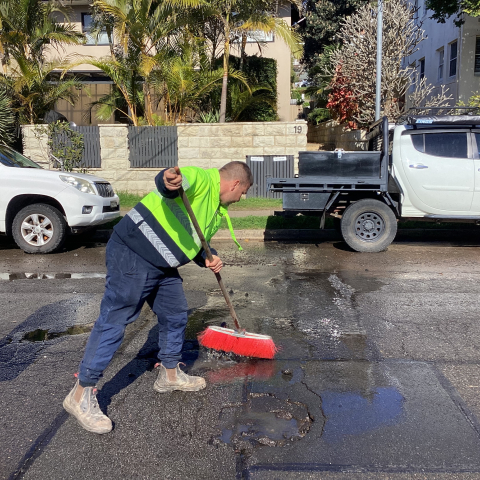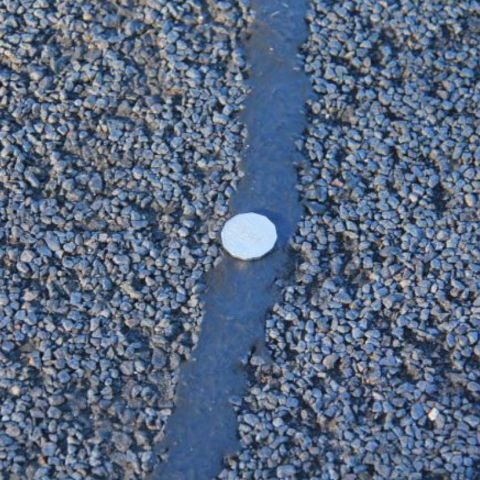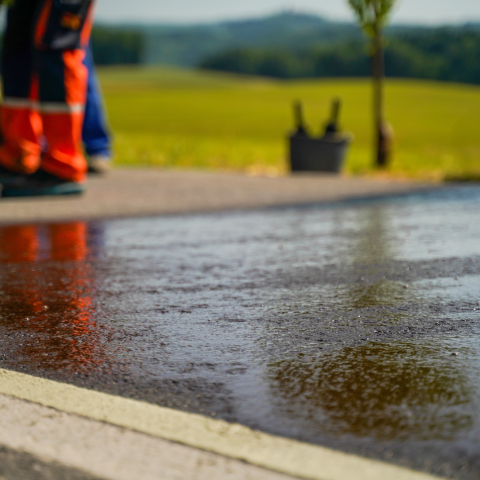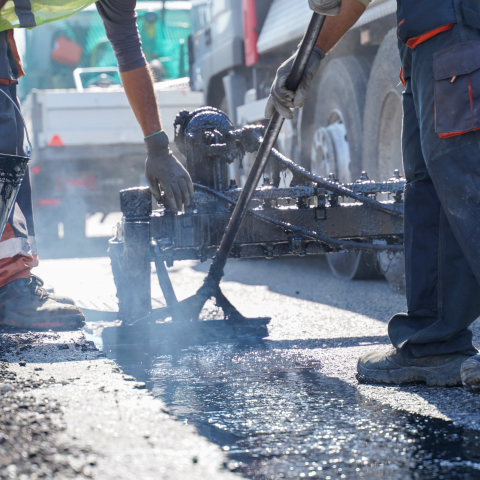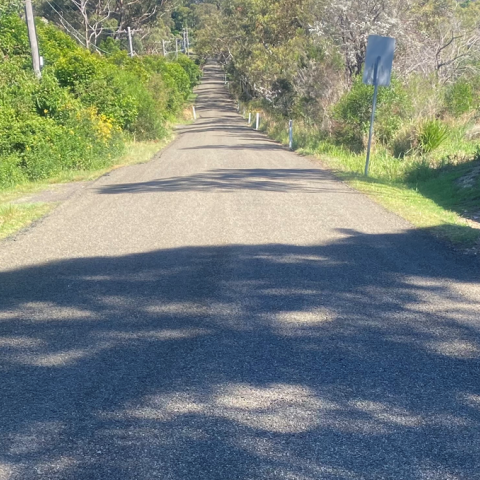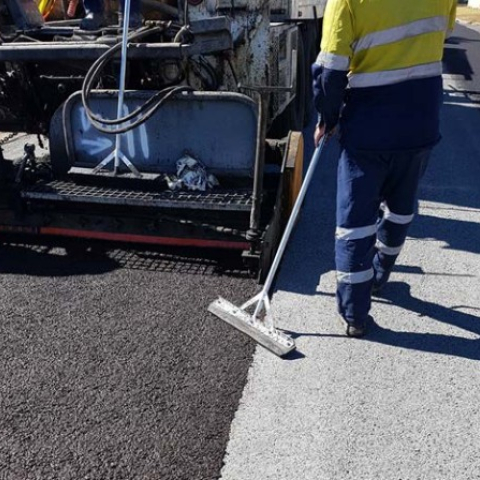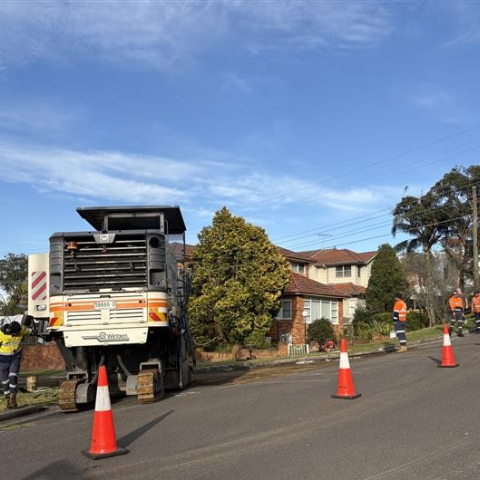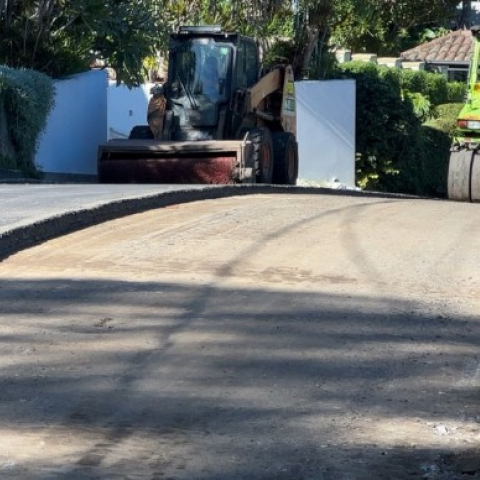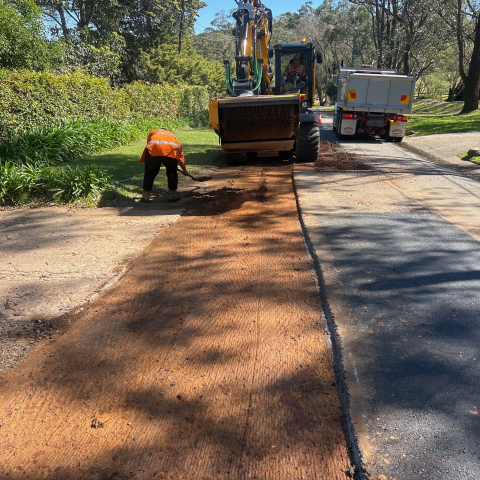What causes damage to the road surface?
Roads are very durable, but they don’t last forever. Over time they are subjected to incredible stresses that cause damage to the surface and below.
In the Northern Beaches, the main culprits are heavy rainfall and traffic, especially from trucks and buses. Traffic pressure causes surface cracks and rutting (depression of the surface in the wheel path), while rain – particularly during storms – is the most destructive.
When water enters cracks, it erodes the base layers beneath the asphalt, creating voids that eventually collapse and form potholes. This damage worsens after prolonged or intense storms, which is why potholes often spike following severe weather events.
What's happening with road works on your street?
We're working to keep your neighbourhood safe and connected. If you're curious as to what is being repaired and how, here are the most common treatments we use to maintain and repair your local roads.
Isolated repairs
Sometimes localised repairs are necessary to keep our road network functional. Examples include pothole filing, crack sealing and heavy patching.
Pothole filling
Our priority is always to make the road surface as safe as possible, as quickly as possible, to help avoid accidents and damage to vehicles. Ranging from $30-$200 per hole depending on number and location, filling potholes is a quick and cost-effective, short-term solution to an urgent problem. It prevents the pothole from getting bigger and minimises the risks to safety and vehicle damage.
Once we’ve filled the potholes, we’ll investigate more permanent solutions to be included in our future road maintenance program.
Crack sealing
A preventative technique where we use a flexible sealant to fill cracks in the road surface and help stop water and debris from eroding the base layers and causing further damage. It’s one of the most cost-effective ways to prolong the life of the road surface.
Heavy patching
This is a technique that’s used where large sections of the road are in very poor condition but don’t require a full reconstruction or replacement. Heavy patching addresses problem areas before a new surface layer of bitumen or asphalt is laid on top and helps improve safety and prolong the life of the road.
It costs around 6 times the price when compared to simply filling potholes, however it results in a longer-term solution in localised areas that is still less expensive than a full reconstruction of the entire road.
Substantial road works
Our road renewal program involves applying a range of treatments to entire road segments, rather than conducting isolated or patch repairs. Each treatment type varies in cost, durability and overall benefit, as outlined below. If you've received notification that your street is included in the program, it will undergo one of these treatment types.
This graph shows the relative cost of each treatment option for more substantial road works. Although real costs will vary from project to project, depending on site conditions, the graph indicates the relative cost per square metre of each treatment.

Rejuvenation
A preservation method that restores lost oils and resins in asphalt, enhancing its flexibility and resilience to significantly extend its service life. As proactive maintenance, it helps prevent deterioration and restores the road’s flexibility. This low-cost solution is an effective alternative to full resurfacing. On top of that, it restores the surface and often makes it look new again!
Resealing
A stronger alternative to microsurfacing at a similar price that involves adding a mix of bitumen and stone to the existing road surface. This restores the road’s integrity and texture while improving skid resistance. It is an excellent way to provide a protective surface, especially in areas with heavy traffic. However, it does result in a bumpy surface and is generally not applied in suburban areas, but more usually on our rural streets.
Microsurfacing
Microsurfacing is a preservation technique that extends the life of road surfaces by applying a thin layer of black, slurry-like material using specialised equipment. This treatment addresses minor surface defects, seals the pavement to prevent water ingress, and enhances skid resistance and grip, resulting in a safer road environment. The material typically can be driven on within three hours, offering a fast and efficient solution with minimal disruption.
Due to its liquid nature, the finished surface may not appear as neat or uniform as a full asphalt resurface (milling and resheeting), particularly around the edges near gutters. However, a full asphalt resurface generally costs more than four times as much. By using microsurfacing, we can defer the need for more expensive interventions by up to 10 years, making it a highly cost-effective maintenance strategy.
Milling and resheeting
The top layer of the road surface is removed and replaced with a new layer of hot-mix asphalt. The process significantly increases the life of the road and solves several issues at once, by creating a smooth, level and safe driving surface. It’s quicker and causes less disruption than a full reconstruction.
Reconstruction/rehabilitation
Reconstruction involves removing the entire road surface including the sub layers and replacing it with new material. It is necessary for severely deteriorated roads, those damaged by natural disasters and roads that have reached the end of their serviceable life.
This process is significantly more expensive, requires more extensive planning, takes longer to complete and causes more disruption than other treatments. We want to make sure our roads are maintained and renewed through alternative methods to delay the need for costly reconstruction as long as possible.
Frequently asked questions
Why does my road need resurfacing if it doesn’t look damaged?
Even if a road looks fine on the surface, small cracks and wear can lead to bigger problems over time. Treatments such as rejuvenation and microsurfacing are preventative measures that are only suitable on surfaces with relatively little damage.
We balance fund allocation between capital renewal projects and preventative maintenance treatments. The cost of capital renewal projects such as milling and rehseeting or reconstruction, makes rejuvenation and microsurfacing treatments desirable to extend the road's life and avoid more costly repairs in the future.
It's a bit like servicing your car - regular maintenance keeps it working better and saves money in the long run.
Why do some roads get resurfaced more often than others?
Different roads experience different levels of wear based on traffic volume, drainage conditions, geotechnical conditions and original construction quality. High-traffic roads, steep roads and intersections wear out faster and require more frequent maintenance, just as running shoes worn daily will wear out faster than dress shoes you only wear occasionally.
Why fix one section of the road but not the whole street?
Not all parts of a road wear out at the same rate. Some areas might need heavy patching, while others just need minor resurfacing. Repairing only the damaged sections saves money and resources while keeping the road safe.
In some cases, Council will stage works and repair the remaining distressed areas when budgets permit, allowing us to focus on and prioritise more critical parts of the road network.
Why does Council continually fill potholes when the road requires a more substantial treatment?
Council's priority is to maintain the safety of the road and minimise further damage to vehicles. We manage over 840 km of road network and with limited funds we need to prioritise major rehabilitations and reconstructions.
Pothole filling is a quick and cost effective short-term solution until these major treatments can be undertaken. Rebuilding a road requires careful planning including geotechnical investigations, traffic data analysis, service locating, coordination with stakeholders, road and pavement design and engaging a contractor. This process may take over 12 months depending on the complexity of the site.
How does Council decide between repairing a road and fully rebuilding it?
The choice depends on pavement condition, traffic load and budget. If a road has minor wear, it may only need resurfacing or rejuvenation. If the base layer is failing, heavy patching or full reconstruction may be needed. Priority goes to roads that pose safety risks or major disruptions.
Why do some roads look brand new while others seem neglected?
Road maintenance isn’t just about appearance, it’s about preventing costly damage. Some roads may look fine but need preventative treatments to extend their life, while others that seem worse might still be structurally sound. We use several different parameters to prioritise repairs.
How can I report a road issue or request maintenance?
Why wasn’t my street selected for repairs this year?
Roads are prioritised based on condition data, traffic levels, strategic importance, safety risks and available budget. Some roads might look rough but still be structurally sound, meaning they don’t need immediate repairs. We use data-driven assessments (like pavement condition ratings) to ensure funding goes where it's most needed.
Why does there seem to be random holes dug in the road?
Prior to pavement construction, it is crucial that we identify the location of utilities like water, gas, telecommunications etc., to avoid impacting these services. This process is called potholing and it is used to precisely identify and map underground utility locations. The process involves locally disturbing the soil with high pressure water or air, then vacuuming the soil to expose the location of the utility.
Why does heavy patching get done before some works?
Heavy patching is used to address any structural defects which occur deeper with in the pavement structure or at subgrade level. Treatments such as milling and resheeting and microsurfacing only address surface issues. Correcting these structural issues prevents premature deterioration of the wearing surface.
Will I be notified before work begins?
Pothole filling and other minor repairs with little disruption will not be notified. For substantial repairs you will receive a notification at least 4 weeks before work starts.
What happens if it rains?
Pavement construction is dependent on dry weather and specific temperature ranges. If it rains, the work will be rescheduled.
Why night works?
Night works are often scheduled when day works would cause too much disruption to traffic, bus routes, businesses and the wider community. Examples include main roads, roads near schools or business areas. With typically lower traffic volumes at night, it's safer for both workers and motorists.
Why aren’t the road lines repainted immediately?
Fresh asphalt needs time to cure before permanent line markings can be applied. This usually happens within a few weeks. We use temporary markings until then.
Will I be notified about the linemarking work?
No, because line marking depends on dry weather and is scheduled at short notice. However, the process is quick and low-noise and is usually done at night.
How can I help during the works?
To help the process run smoothly, please:
- keep vehicles off the road. Park in your driveway overnight
- keep pets indoors for their safety and to prevent disruptions
- avoid watering your verge. A dry surface is needed for the best results.
Why do roads sometimes look worse before they look better?
Treatments like microsurfacing or rejuvenation, need time to fully cure. When first applied, the road might look patchy, rough, or dusty. Over the next few days or weeks - sometimes months, depending on environmental conditions - the material settles and will visually improve.


